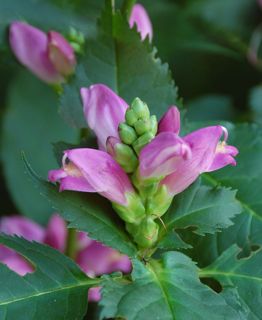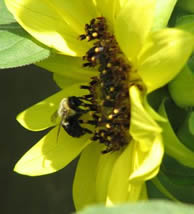|
Our sponsors
The Plantsmen Nursery
The greatest diversity of native plants and other items of interest to habitat gardeners
Growing Wild Perennials
Maple Hill Nursery
Phoenix Flower Farm
Wild Birds Unlimited
|
|
Simplify Your Life
|
When
ornamental gardeners become habitat gardeners, they come to appreciate
the pleasures of simple things in life - like enjoying the birds and
butterflies that come to your yard. But you can simplify your life in
other ways, too! Another local group, Living Green, Living Good, will co-sponsor with Liverpool Library the Northwest Earth Institute discussion course called Voluntary Simplicity. Here's more information on the course and readings. The group starts on Saturday, September 19, 10:30 - 12:00, and continues for five weeks. The manual of readings costs $22
(couples are invited to share a book), payable at the first meeting.
If you're interested, sign up through Liverpool Library. Either go to the calendar for September and click on the course to register online or call Pam Sprague at 457-0310 x112. There's a limit of 15 people.
|
| Words of Wisdom
|
by Sara Stein, Author of Planting Noah's Garden and honorary director of Wild Ones
|
Merely decorative plants merely grow. In time they grow too big, or they die; then someone takes them out and redecorates with others. Nothing else happens. There is no evolution. There is no profit set aside for the future because, for all the money spent, there has been no investment in the land.
When our concept of land ownership was generational, it must have seemed ordinary to plant a line of sapling sugar maples that someday one's grandchildren would tap for maple syrup. Sugar maples planted along New England roads are well over a century old, some close to twice that age, but hardly anyone is planting young ones. I think this is deeply wrong, or at least inordinately selfish. I know my land will pass into the hands of strangers; even so, I owe them its future. In our present and difficult transition to a wiser suburban landscape, we are all pioneers, preparing the ground for its future occupancy.

Our baby oak tree
|
|
|
HGCNY Annual Picnic, Tours, Plant Sale
Free and open to the public. Join us!
HGCNY August Picnic Meeting -Our last summer meeting before our regular meeting schedule starts up again in the fall will again be a potluck picnic at Clark Reservation State Park. If last year is any guide, we'll treat ourselves to a delicious meal! We'll again tour the native plant demonstration garden at the picnic grounds before eating, then conclude with a walk along the trail with a special emphasis on spotting invasive plants growing there. We'll be guided on our walks by Fran Lawlor of Cooperative Extension, one of the creators of the native plant demonstration garden and an invasive plant expert. Don't miss it! DATE: Wednesday Aug. 26 at 5:00 pm ( NOTE CHANGE from our previous tentative date!) Bring your own place setting and a dish to pass. We'll supply the charcoal and utensils, and you can grill your own meat. Any volunteers for bringing some beverages - perhaps lemonade, soft drink, iced tea?
Homeowner Tours - You can arrange with some of
our HGCNYers to tour their gardens at a mutually agreeable time. (See meetings webpage for contact info...)
Janet's Habitat Garden (and John's Edible Garden):
 Sat. Aug. 22 at 10:00 am ( Directions to the Allens' gardens...)
Annual HGCNY Native Plant Sale -We rely on HGCNYers to supply the plants for this sale, so as you survey your garden, please start thinking of which plants are likely candidates to donate to our sale.
*** Native plants only, please! *** DATE: Saturday September 12 at 9:30 am. Final details in the next newsletter. |
|
Featured resource on our HGCNY web
Our website has a lot of information in our Resources section. Once you get to the first page of that section, look at the right hand menu, and you'll find a wealth of other resources on a variety of subject areas. Featured resourceThis month's featured resource is from the Habitat Gardening page of our resource section: The Audubon At Home Guide to Gardening for Life in Southeastern Pennsylvania. Yes, it says Pennsylvania, but most of the information applies to Central New York, too. Many of the recommended plants are also native here. This resource could actually qualify as a small book - all downloadable for free. Go to the bottom of the Audubon webpage, and download each chapter separately. Each chapter discusses a topic in general, then shows a garden or natural area as an example of what people have done. A very attractive and informative resource! You're sure to get some good information and ideas. |
|
Featured plant: Turtlehead
 Take
a look at this chelone and you'll see why its common name is
"turtlehead." This photo is of pink turtlehead ( Chelone lyonii), native to regions south
of CNY; white turtlehead ( C. glabra) is native here in CNY. You may have seen some blooming on your trips to Adirondack lakes. Despite
its unusual look, it's easy to grow. If you grow it in sun, it will do better in moist soil. In shadier areas, regular garden soil is fine. They divide
and transplant readily and are quite trouble-free. BONUS: They're a caterpillar food plants for the pretty little Baltimore Checkerspot butterfly!
|
|
|
More deer "solutions"
If you're having problems with deer eating your plants, here are some additional "solutions" to try.
Caution: These recipes contain red pepper and raw eggs...be careful to avoid
contact with face and be sure to wash hands after handling. Keep out of
reach of children.
From Monches Nursery, an advertiser in the Wild Ones Journal
Mix together in an gallon jug of water (you can use an empty milk jug):
1 egg
1/2 cup milk
1 Tbsp. oil (either hot chili oil or regular
vegetable oil)
1 Tbsp. dish soap
Allow to "ferment" for several
days or weeks.
Filter out large sediment and apply with sprayer.
Reapply
from time to time.
From the Audubon at Home guide (described above)
Liquefy ingredients in a blender, then mix with the 1-2 quarts of water, strain, and place in plant sprayer:
1-2 quarts water
3 whole eggs
1 large clove garlic
Couple of Tbs. of chili powder or hot pepper sauce
1 tsp. shavings of deodorant soap
Spray on plants every couple of weeks and after rains. Keep excess in tightly closed jar. Offensive odor will develop and that's just what the deer hate.
|
|
The Great Sunflower Project
 This bee is "participating" in the Great Sunflower Project, a citizen science program. This particular flower was grown from the seeds distributed by the project. This bee is "participating" in the Great Sunflower Project, a citizen science program. This particular flower was grown from the seeds distributed by the project.
But if you didn't get a chance to grow the specified sunflower seeds, you can still participate. There are a few other plants, such as monarda, that you can also use to gather data. Chances are you have at least one of them in your garden now.
Simply spend 15 minutes watching bees come to your flower - or until 5 bees arrive (whichever comes first). Details are at the Great Sunflower Project. It's not too late to participate. Every bit of data collected will help scientists learn how we can best protect our bees!
|
|
Don't see fireflies as you used to?
To find out why, some of you may be joining the hundreds of people nationwide participating in the Firefly Watch citizen science project, sponsored by the Boston Museum of Science. Anyone can join this or other citizen science projects. You don't have to be a scientist to participate. It's a wonderful way to give children a chance to actually participate in science, not just read about it!
The information collected by us citizen scientists can help scientists learn the specific reasons why there are so few fireflies, but there are three suspects: habitat destruction, light pollution, and bounty hunting. (More information on these is at FLASH Together Now.)
You probably could have guessed habitat destruction, you might have guessed light pollution, but you probably would not have suspected bounty hunting!
Here's an excerpt from the Museum of Science's July Firefly Update about this problem:
It is heartening to see that so many people have joined Firefly Watch in the hopes of reversing this trend [of declining numbers of fireflies]. So,
imagine my dismay when I received an email from Mary, one of our
Firefly participants, with an article from a Tennessee newspaper about
a chemical company offering to pay $12 an ounce - that's over 600
fireflies -- to harvest their light-producing chemicals to be used in
research. For most of us, collecting an ounce of fireflies would
eliminate all the fireflies in our habitat and more! The truly sad part
is that for over 20 years, scientists have been able to synthetically
manufacture these same chemicals.
|
|
|
|
|